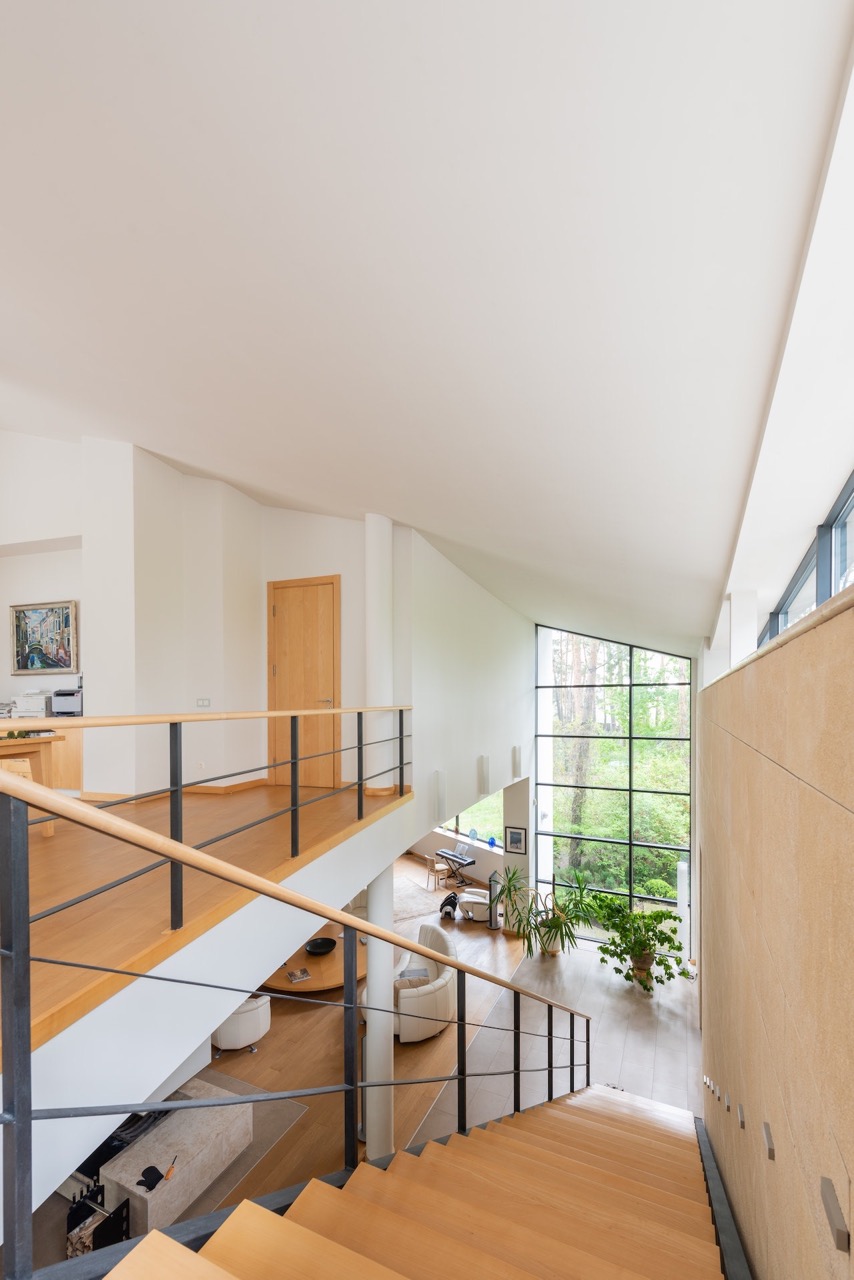Introduction
Railings, whether winding up a grand staircase or bordering a serene balcony, have long held an unassuming presence in architectural designs. Their subtle yet consistent influence often relegates them to the background, as mere functional elements. However, delve deeper, and you’ll uncover the transformative power these structures hold in redefining spaces. From a villa overlooking the Mediterranean to a cozy loft apartment in the heart of the city, the right railing can seamlessly blend safety with aesthetics, crafting a narrative that resonates with the soul of its surroundings.
While we might be captivated by bold arches, expansive windows, or intricate mosaics, railings silently contribute to the ambiance, directing foot traffic, framing views, and adding layers of depth and dimension to interiors and exteriors alike. This article journeys through the world of railing designs, emphasizing how a seemingly simple choice can radically transform and elevate your space.
This introduction establishes the significance of railings, positioning them not just as safety barriers but as essential elements of design that can dramatically shape the perception and experience of a space. It sets the stage for the reader to dive deeper into the nuances of railing designs and their impact on architecture and interiors.
History of Railing Designs
Railings, much like most architectural elements, have a storied history, reflecting the design aesthetics and societal norms of their times. Ancient civilizations, with their opulent palaces and grand temples, often incorporated railings as both protective barriers and symbols of power and opulence.
For instance, the ornate bronze railings of India’s ancient temples, intricately carved with deities and myths, were not merely safety barriers but storytellers of an era. Similarly, in Renaissance Europe, balustrades adorned the balconies of grand estates, intricately designed with motifs signifying wealth and stature.
As societies evolved and the world ushered in the Industrial Revolution, the design aesthetics of railings underwent a significant shift. The ornate designs of the past made way for functional and streamlined railings, reflective of the newfound love for machinery and industrialization. But even in this simplicity, there was a design narrative – one of efficiency, modernity, and the future.
Materials Matter
The material of a railing significantly impacts its aesthetics, durability, and how it influences the ambiance of a space. Over the ages, a myriad of materials have been harnessed to craft railings:
Wood: Timeless and warm, wooden railings bring a touch of nature indoors. They are versatile, suiting both traditional homes with their rich, dark finishes and modern spaces in their lighter, minimalistic avatars.
Iron & Steel: Robust and durable, these metals have been the go-to choice for many who prioritize longevity without compromising on aesthetics. Their malleable nature also allows for a range of designs, from intricate patterns to sleek, contemporary lines.
Glass: A favorite in modern designs, glass railings offer an uninterrupted view and a sense of expansiveness. They lend a clean, airy feel, making spaces look larger and more connected.
Each material tells a story and sets a tone, from the rustic charm of wooden railings in a country home to the sleek elegance of glass barriers in a penthouse overlooking the city skyline.
Through these sections, the article strives to shed light on the rich history of railings and the importance of materials in crafting their narrative. The goal is to offer readers insights into how railings, though often understated, play a pivotal role in shaping a space’s character and feel.
Popular Railing Styles and Their Impact
As varied as the materials from which they’re crafted, railing styles can dramatically influence the overall vibe of a space:
Traditional: Often crafted from wood or wrought iron, traditional railings evoke a sense of history and elegance. Characterized by ornate spindles and rich finishes, they fit seamlessly in historical renovations or homes seeking a touch of antiquity.
Modern & Minimalistic: Favoring clean lines and unobtrusive designs, modern railings often utilize glass, stainless steel, or simple iron frameworks. They often serve to open up spaces, giving a feel of seamlessness, especially in open-floor plans.
Industrial: Drawing inspiration from warehouses and factories, industrial railings feature raw, unfinished materials like exposed steel with rivets. These designs resonate with loft-style apartments and spaces that celebrate an urban aesthetic.
Ornate & Decorative: Heavily detailed and intricately designed, these railings can be likened to art pieces. Often seen in grand establishments or homes that prioritize luxury, they serve as focal points, captivating attention with their detail.
The Magic of Custom Designs
While off-the-shelf railings serve many, there exists a world where railings are tailor-made to resonate with a space’s unique character. Custom designs allow homeowners and designers to venture beyond the standard, crafting railings that align perfectly with a home’s architecture and the owner’s personal style.
Be it carving out a family crest on a wooden banister or incorporating LED lights into a modern glass railing for an avant-garde look, custom designs break boundaries. They offer not just functional safety but also a chance to embed a personal touch, making spaces genuinely reflective of those inhabiting them.
Railings Beyond Stairs
While stairs remain the most obvious location, railings find utility and aesthetic value in various other parts of a home or establishment. Balcony railings, for instance, not only ensure safety but can also enhance or frame a view. Terrace railings can define outdoor spaces, offering both privacy and style. In gardens or patios, they can serve as trellises, supporting plant growth while demarcating areas.
Even within interiors, railings can be used to break up large rooms without closing them off entirely, allowing for a visual division of space while maintaining an open feel.
These sections delve deeper into the versatile world of railings, illustrating their multifaceted roles in design and architecture. By exploring different styles and applications, the article underscores the transformative power of railings in shaping spaces.
Safety First: Balancing Design with Function
At the heart of every railing’s design lies its primary purpose: safety. As designers and homeowners push the boundaries of aesthetics, it becomes paramount to ensure that function is never compromised.
Modern regulations and building codes often dictate the height, gap width, and strength of railings, ensuring that they prevent falls and provide adequate support. For instance, railings with too wide a gap can pose risks, especially in homes with children. Similarly, balustrades on balconies need to withstand external forces like wind.
However, safety needn’t come at the expense of style. Glass railings, while offering unobstructed views, are now crafted from tempered or laminated glass to ensure they’re shatterproof. Similarly, the intricate designs of wrought iron railings are often melded with a handrail to ensure a proper grip.
Future Trends in Railing Design
As we step into the future, railing designs continue to evolve, mirroring the advancements in technology and changing aesthetic sensibilities:
Sustainable Materials: With an increasing emphasis on green living, materials like bamboo, recycled metals, and eco-friendly composites are making their way into railing designs.
Tech-Integrated Railings: The merging of tech with design has given rise to railings with embedded LED lighting, motion sensors, and even heating elements for outdoor spaces in colder climates.
Blending Indoors and Outdoors: As homeowners seek a closer connection with nature, railings are being designed to offer a seamless transition between indoor and outdoor spaces, often using transparent materials or minimalist designs.
Conclusion
Railings, in their myriad forms and designs, have transcended their fundamental role of safety to become vital elements in the realm of design. From the ornate balustrades of yesteryears to the sleek, tech-driven designs of today, they showcase the evolution of architectural thought. As you embark on your design journey, remember that the right railing doesn’t just protect; it transforms, narrates a story, and, most importantly, defines a space.
By covering the pivotal role of safety in railing design and touching upon future trends, this segment brings the article full circle. It underlines the essence of railings in architecture and design, emphasizing their dual role as safety providers and aesthetic enhancers.

